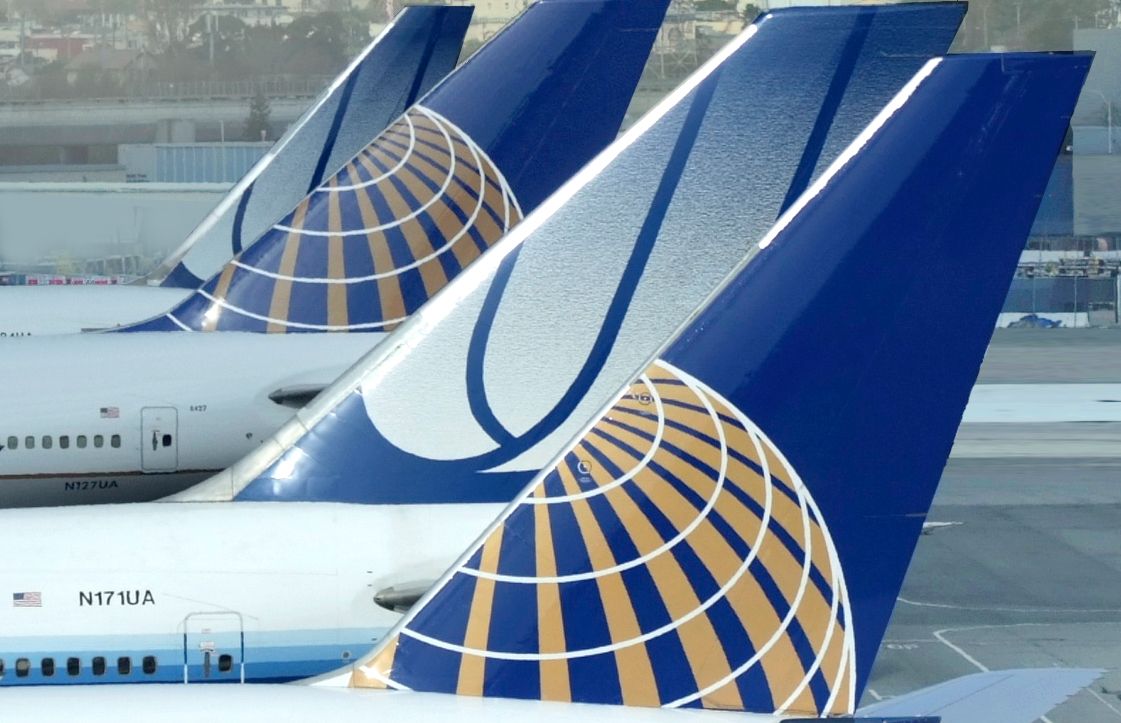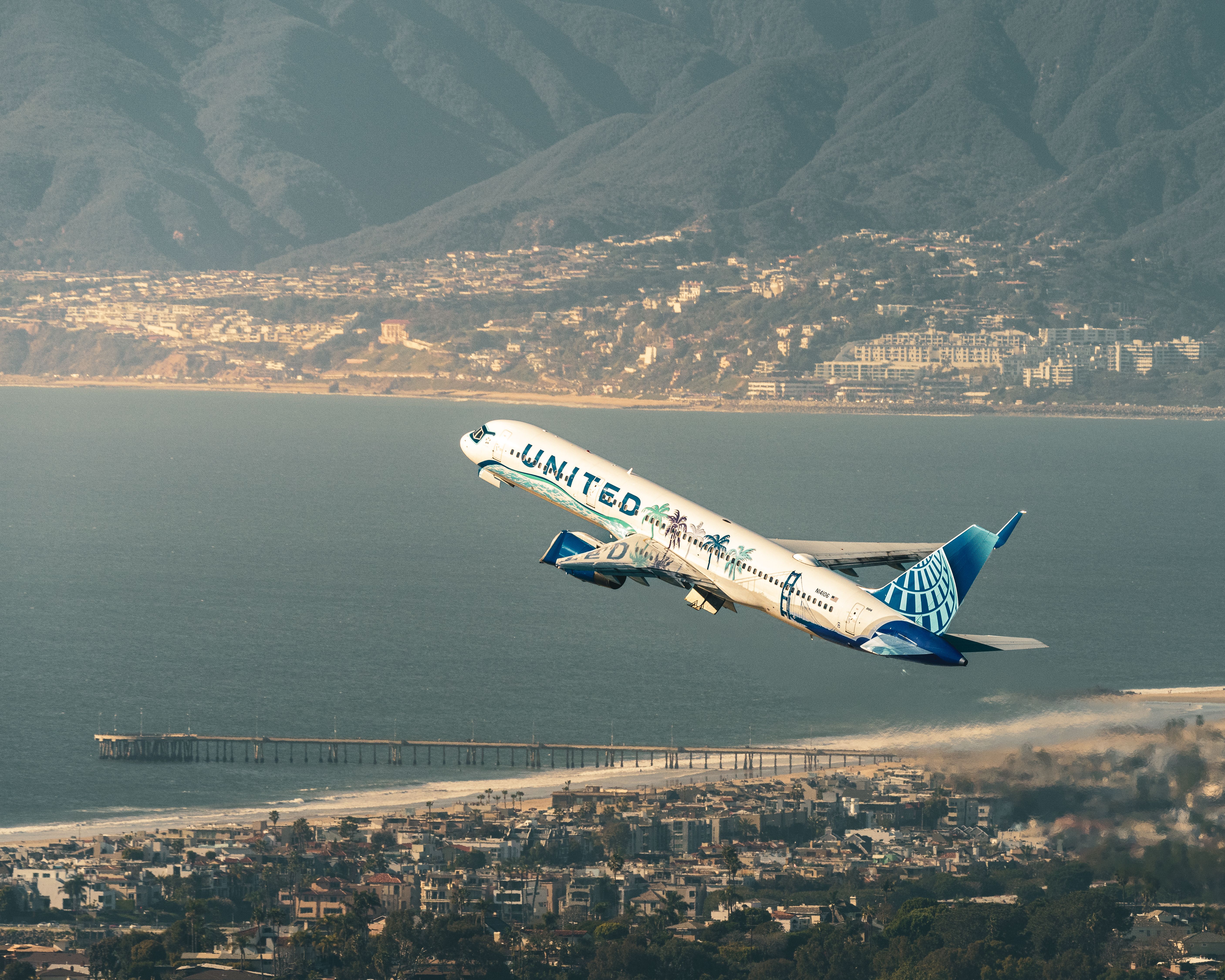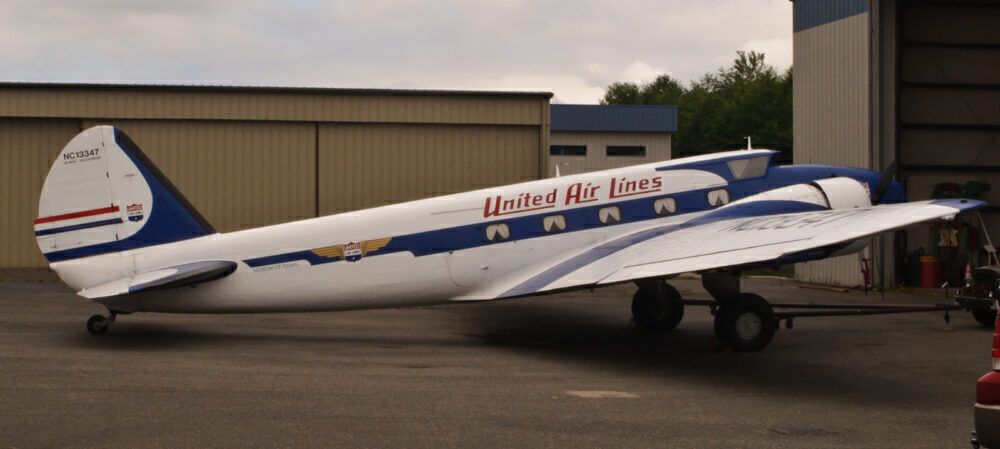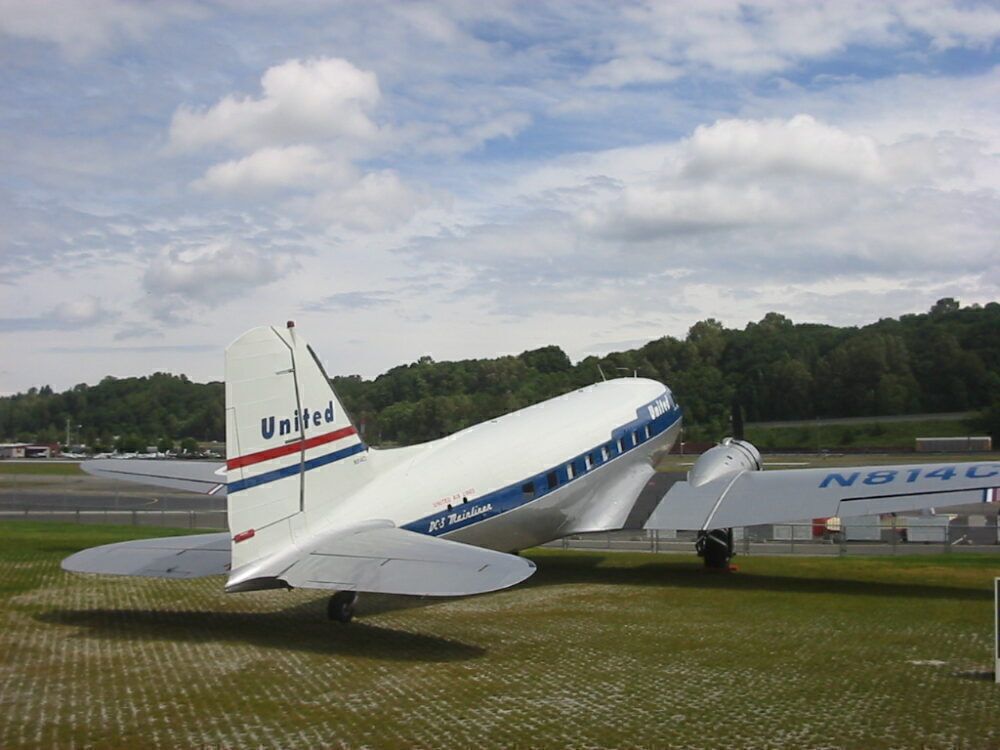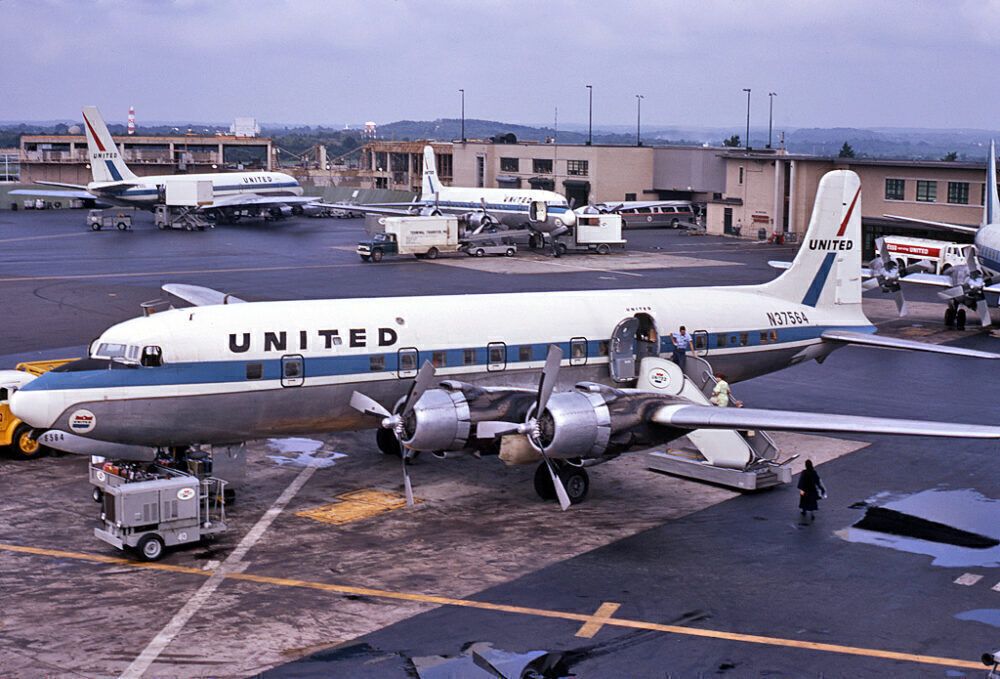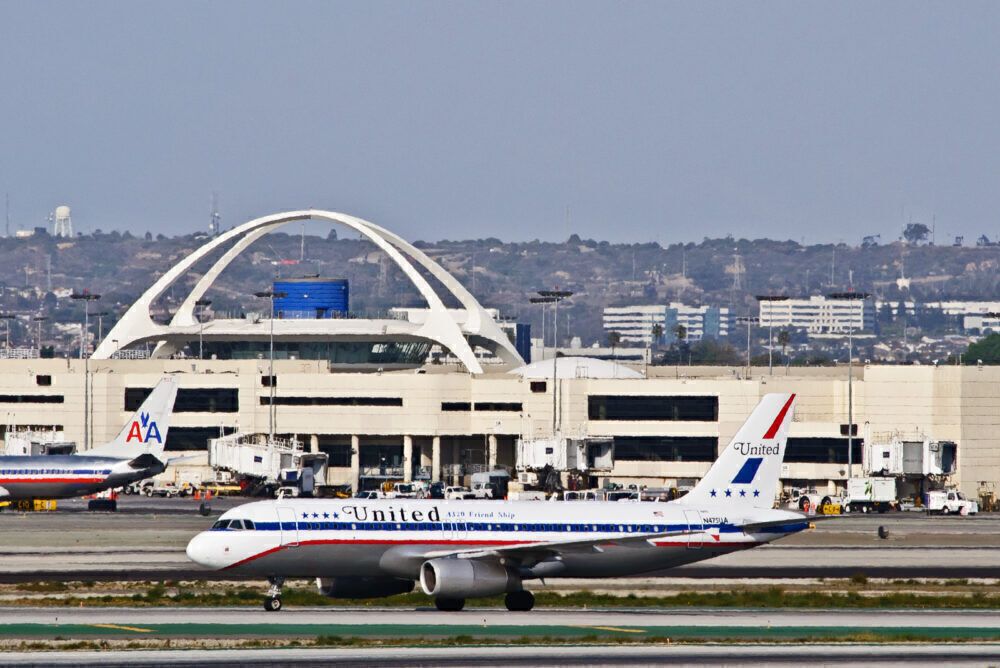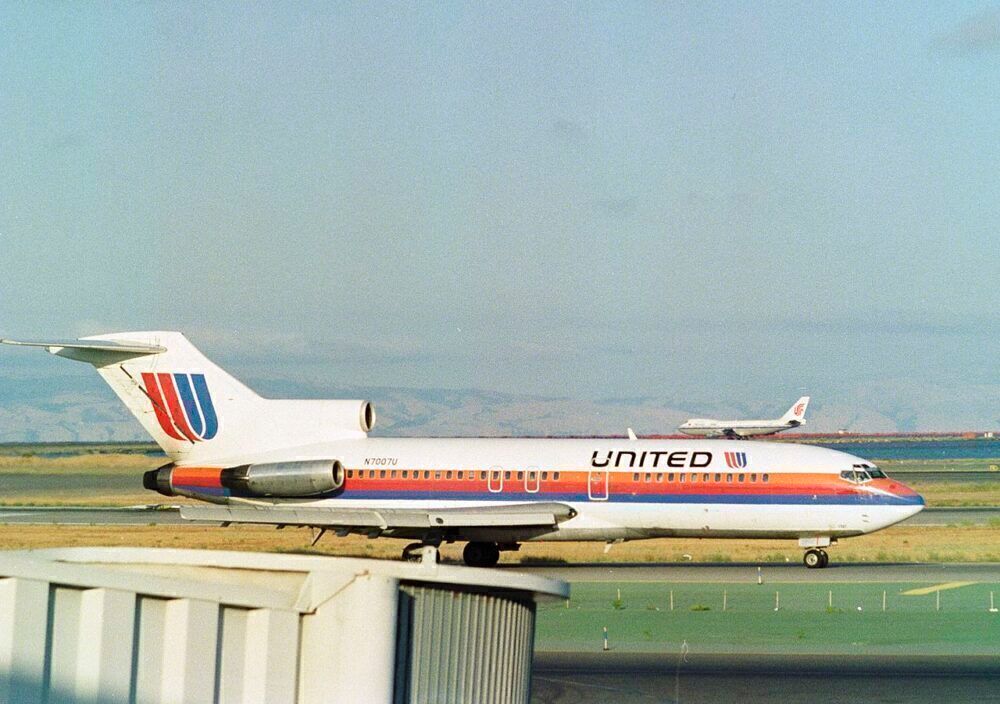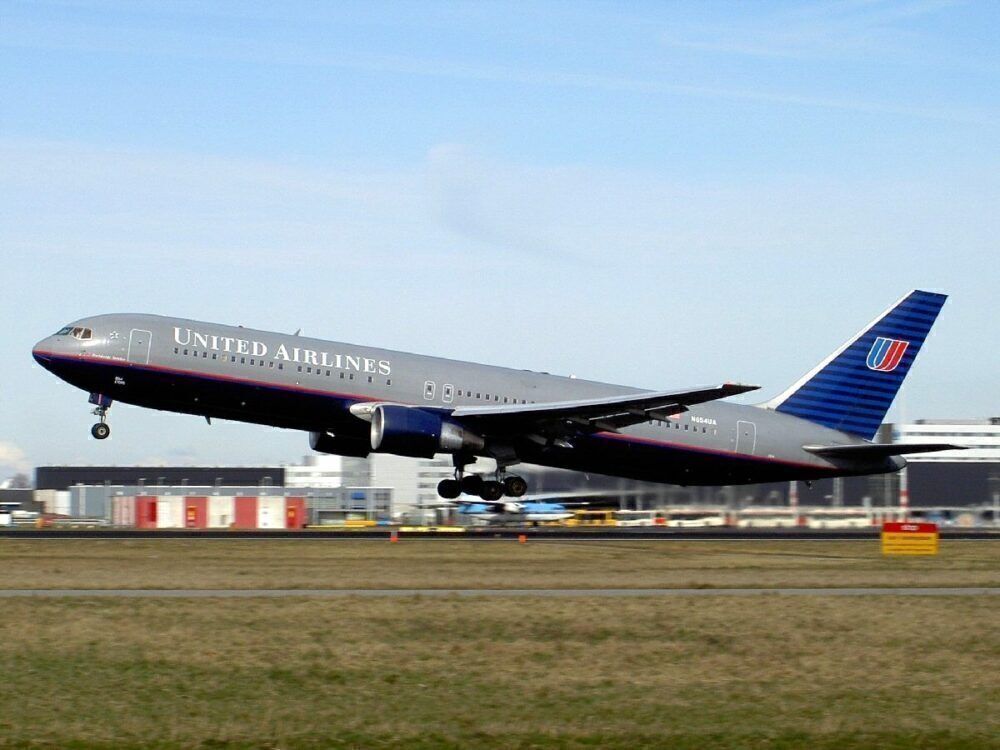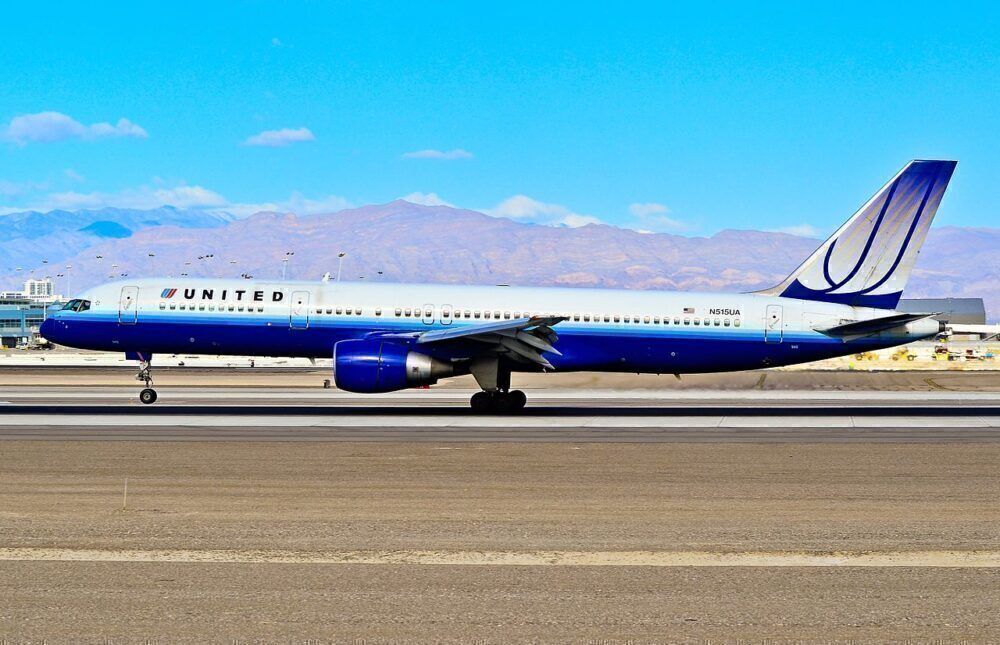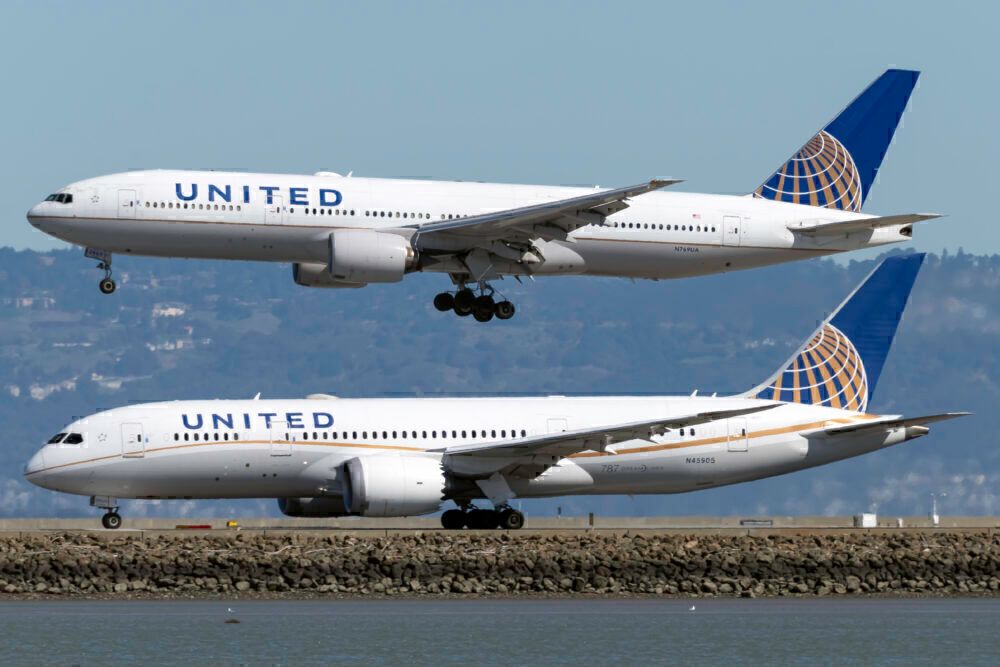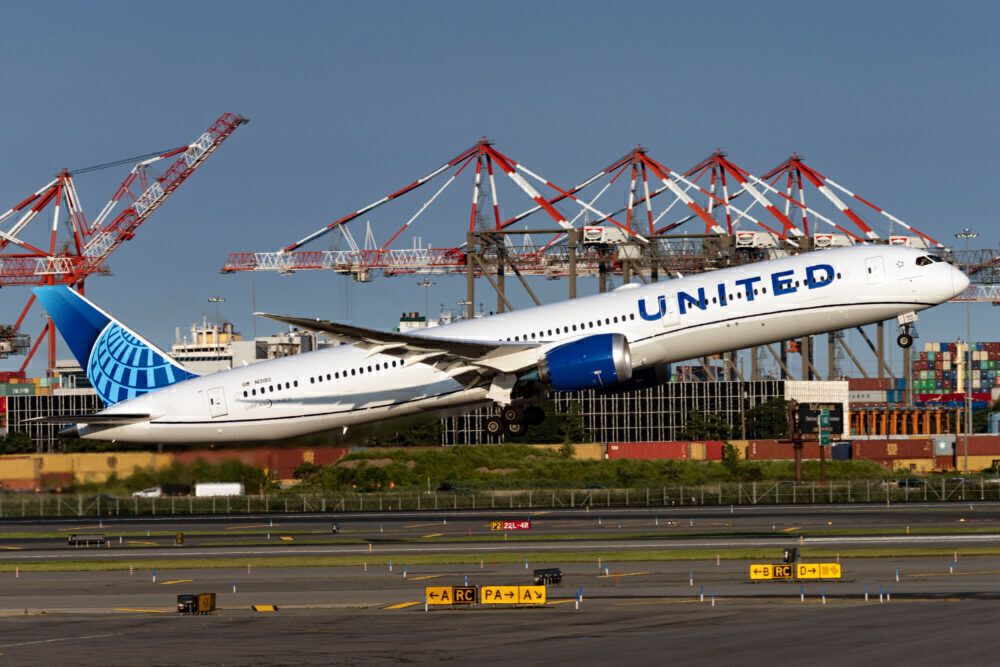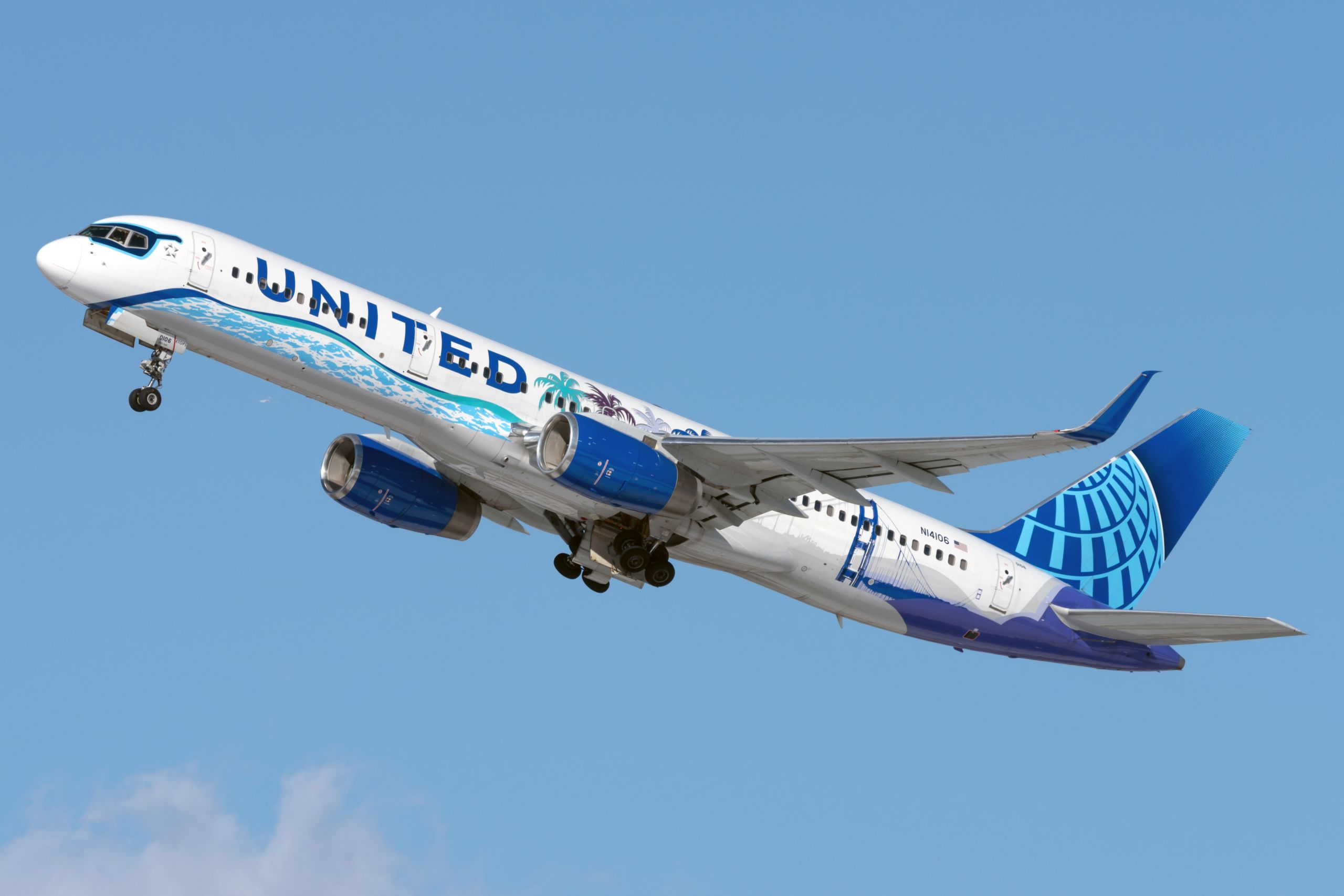Chicago-based US legacy carrier and Star Alliance member United Airlines has a long, rich history dating back nearly a century. During this time, its livery has experienced several aesthetic alterations. While some of these have been minor tweaks, others have fundamentally changed the airline's corporate identity. Let's take a look at United's various different liveries over the years.
The early years
The Boeing 247 was the US manufacturer's first all-metal aircraft. United was its in-house airline at the time, and the carrier flew the 247 from 1933 to 1942. It was painted in a white livery, featuring a blue cheatline and red writing for its name.
Stay informed: Sign up for our daily and weekly aviation news digests.
United added the Douglas DC-3 to its fleet later in the 1930s. Its livery was broadly similar to the Boeing 247, although there were a few differences. For example, the blue cheatline was extended upwards towards the cockpit to surround the airline's name, which was now painted in white, rather than red.
Furthermore, above the red, white, and blue tricolor stripe on the tail that the Boeing 247 had also sported, United added its name in blue.
The airline industry is always full of new developments! What aviation news will you check out next?
After the Second World War, United began flying the Douglas DC-6 in 1947. It operated the type for more than two decades, eventually retiring it in 1970. This aircraft type retained the carrier's characteristic blue cheatline. However, this feature did not surround the airline's name as it had done on the Douglas DC-3.
Furthermore, the print for its name was black, and in block capitals. The DC-6's tail no longer featured the tricolor design, but rather a diagonal red and blue line interrupted by the carrier's name, printed once again in black block capitals.
Into the jet age
As United developed its fleet with the addition of jet-powered aircraft such as the Douglas DC-8 and Boeing 720, it also made further developments to its corporate identity. It did so by adding a red line at the point where the white of the plane's fuselage and the grey of its belly met. Furthermore, it added lines of stars to the livery. This paint scheme became known as the 'Stars and Bars,' or the 'Friend Ship.'
In 1974, United's aircraft began wearing a livery with a new logo known as the 'Tulip.' This scheme was designed by Saul Bass, and featured on planes such as the Boeing 727. This proved to be one of United's longer-lasting livery designs.
19 years later, in 1993, United decided that it was time for another rebrand. This saw its aircraft painted grey, with their bellies and tails in dark blue. Known as the 'Battleship' livery, this scheme also featured the tulip logo, and it lasted for 11 years.
The airline's final corporate rebranding before it merged with Continental Airlines came in 2004, in the form of the 'Rising Blue' livery. This was also known as the 'Blue Tulip,' and saw its paint scheme switch to a blue (below the windows) and white (above them) fuselage. The blue section featured stripes of different shades.
Most recent developments
United announced its merger with Continental Airlines in 2010. While the new, larger carrier retained United's name, the livery was heavily influenced by Continental's iconic globe design. The typeface for United's name was also adjusted.
Finally, United adopted its most recent corporate identity just over three years ago, unveiling a new livery in April 2019. This retains the globe design on the tail, although this is now painted in a light blue, as opposed to gold as before. Meanwhile, the tail on which this design sits is also not as dark as in the carrier's previous livery.
Furthermore, the airline's name is now significantly larger. Indeed, its blue typeface now straddles the window line at the front of the aircraft. With this having happened so recently, it's probably safe to say we needn't expect any further alterations in the near future. Nonetheless, it will be fascinating to see what changes United makes when the time does come.
Special liveries
While United's standard liveries have the strongest ties to its corporate identity, it is also worth ending by taking a look at some of the special liveries that it has devised. Among the most notable was a Star Wars-themed design, where each side featured colors and spacecraft corresponding to the franchise's opposing factions.
As seen above, United has also used special liveries to showcase the work of female artists. The design pictured is one of two winners of a competition called 'Her Art Here,' which aims to increase female representation in the arts. The livery above is California-themed, while the other is based on the New York/New Jersey area.
Which United livery is your favorite? During which periods of the airline's history have you flown with United? Let us know your thoughts and experiences in the comments!

